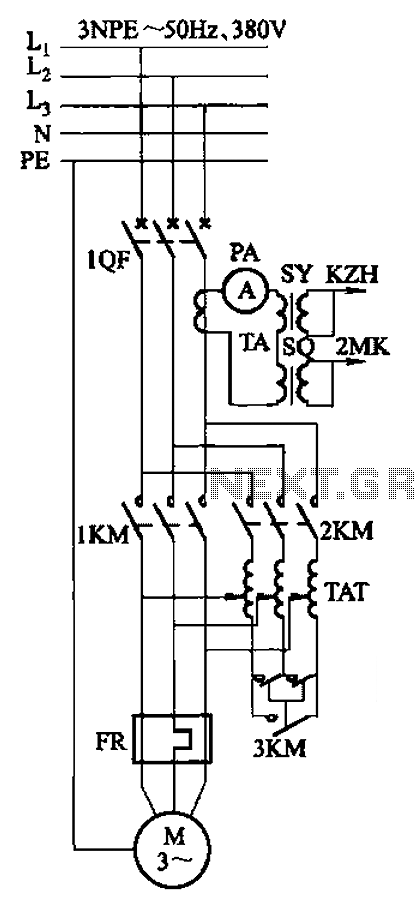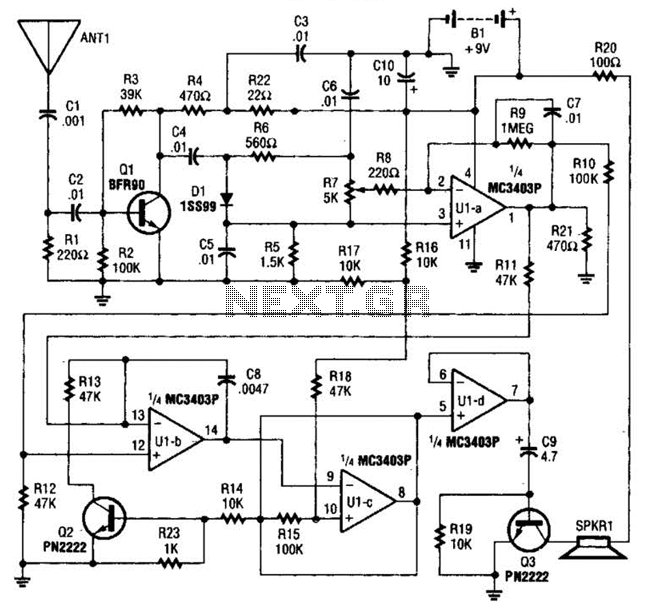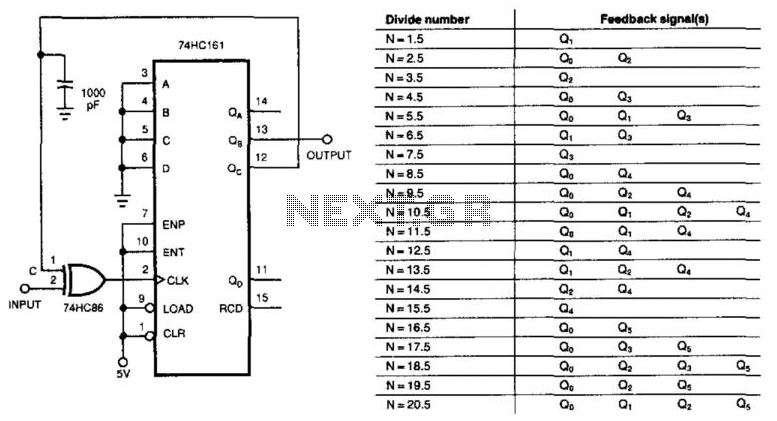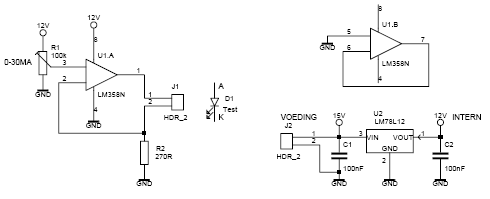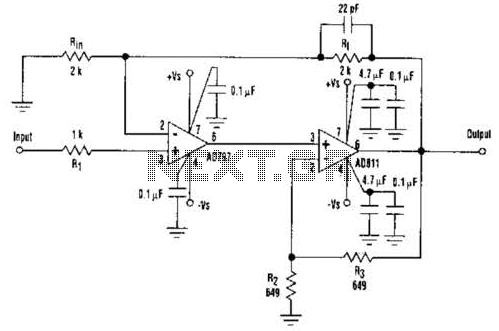
Water-Level Measurement Circuit
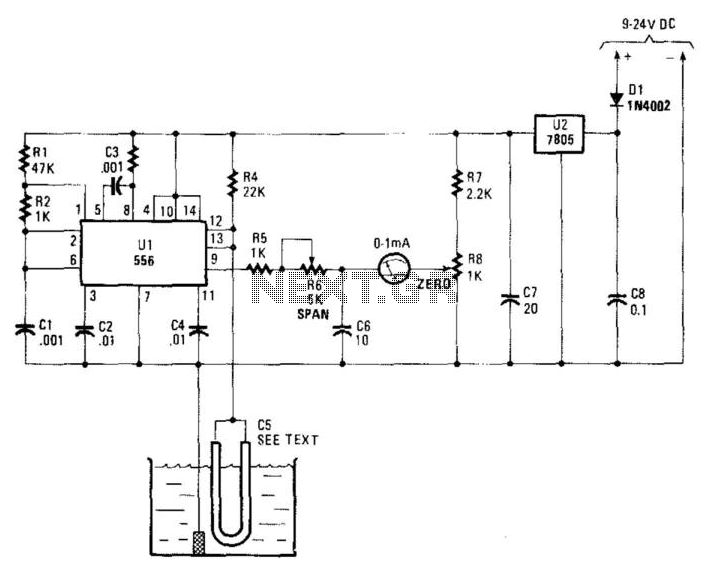
Using a capacitor sensor to detect water levels is a straightforward sensing method. This circuit employs C5, which consists of 10 to 20 inches of #22 enameled wire as one of the electrodes. The oscillator, an NE556 timer, experiences a frequency shift that is dependent on the change in capacitance, which varies with the water level. A meter connected to pin 9 of the 556 serves as an indicator. The size of C5 can be adjusted to fit the specific application requirements.
The water level detection circuit operates on the principle of capacitance variation with changing water levels. The NE556 timer is configured in an astable mode, generating a square wave output whose frequency is influenced by the capacitance of the sensor, represented by C5. As the water level rises or falls, the dielectric constant around the wire electrode changes, thus altering the capacitance.
To implement this circuit, the 10 to 20 inches of #22 enameled wire is coiled or arranged in such a way that it can effectively sense the water level. This wire acts as one plate of a capacitor, with the water serving as the dielectric medium and the surrounding environment as the other plate.
The output frequency from the NE556 timer is monitored at pin 9, which can be connected to a frequency counter or a simple analog meter. The meter provides a visual indication of the water level based on the frequency shift. The frequency output can be calibrated to correspond to specific water levels, allowing for precise monitoring.
Adjusting the length or configuration of C5 can optimize the sensitivity and response time of the sensor, making it adaptable for various applications, such as in tanks, wells, or other water storage systems. Proper calibration and testing are essential to ensure accurate readings and reliable performance in the desired environment. Using a capacitor sensor to detect a water level is a simple method of sensing. This circuit uses C5, which is 10" to 20" of #22 enamelled wire as one electrode. This shifts the oscillator, an NE556 timer, in frequency. The frequency shift depends on the capacitance change, which in turn varies with water level. A meter connected to pin 9 of the 556 is used as an indicator. C5 can be made larger or smaller to suit the intended application. 🔗 External reference
The water level detection circuit operates on the principle of capacitance variation with changing water levels. The NE556 timer is configured in an astable mode, generating a square wave output whose frequency is influenced by the capacitance of the sensor, represented by C5. As the water level rises or falls, the dielectric constant around the wire electrode changes, thus altering the capacitance.
To implement this circuit, the 10 to 20 inches of #22 enameled wire is coiled or arranged in such a way that it can effectively sense the water level. This wire acts as one plate of a capacitor, with the water serving as the dielectric medium and the surrounding environment as the other plate.
The output frequency from the NE556 timer is monitored at pin 9, which can be connected to a frequency counter or a simple analog meter. The meter provides a visual indication of the water level based on the frequency shift. The frequency output can be calibrated to correspond to specific water levels, allowing for precise monitoring.
Adjusting the length or configuration of C5 can optimize the sensitivity and response time of the sensor, making it adaptable for various applications, such as in tanks, wells, or other water storage systems. Proper calibration and testing are essential to ensure accurate readings and reliable performance in the desired environment. Using a capacitor sensor to detect a water level is a simple method of sensing. This circuit uses C5, which is 10" to 20" of #22 enamelled wire as one electrode. This shifts the oscillator, an NE556 timer, in frequency. The frequency shift depends on the capacitance change, which in turn varies with water level. A meter connected to pin 9 of the 556 is used as an indicator. C5 can be made larger or smaller to suit the intended application. 🔗 External reference
Warning: include(partials/cookie-banner.php): Failed to open stream: Permission denied in /var/www/html/nextgr/view-circuit.php on line 713
Warning: include(): Failed opening 'partials/cookie-banner.php' for inclusion (include_path='.:/usr/share/php') in /var/www/html/nextgr/view-circuit.php on line 713
